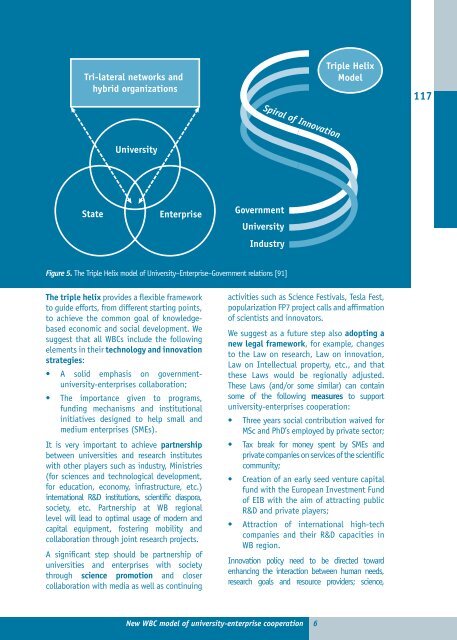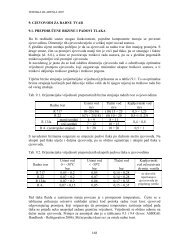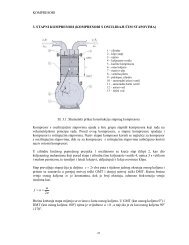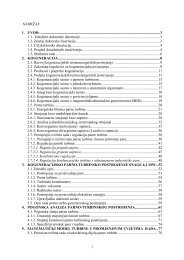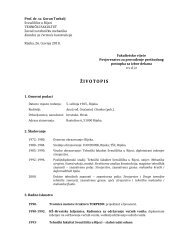universityâenterprise cooperation
universityâenterprise cooperation
universityâenterprise cooperation
Create successful ePaper yourself
Turn your PDF publications into a flip-book with our unique Google optimized e-Paper software.
Tri-lateral networks and<br />
hybrid organizations<br />
Triple Helix<br />
Model<br />
117<br />
Spiral of Innovation<br />
University University<br />
State<br />
State<br />
Enterprise<br />
Enterprise<br />
Government Goverment<br />
University<br />
Industry<br />
Figure 5. The Triple Helix model of University–Enterprise–Government relations [91]<br />
The triple helix provides a flexible framework<br />
to guide efforts, from different starting points,<br />
to achieve the common goal of knowledgebased<br />
economic and social development. We<br />
suggest that all WBCs include the following<br />
elements in their technology and innovation<br />
strategies:<br />
• A solid emphasis on governmentuniversity-enterprises<br />
collaboration;<br />
• The importance given to programs,<br />
funding mechanisms and institutional<br />
initiatives designed to help small and<br />
medium enterprises (SMEs).<br />
It is very important to achieve partnership<br />
between universities and research institutes<br />
with other players such as industry, Ministries<br />
(for sciences and technological development,<br />
for education, economy, infrastructure, etc.)<br />
international R&D institutions, scientific diaspora,<br />
society, etc. Partnership at WB regional<br />
level will lead to optimal usage of modern and<br />
capital equipment, fostering mobility and<br />
collaboration through joint research projects.<br />
A significant step should be partnership of<br />
universities and enterprises with society<br />
through science promotion and closer<br />
collaboration with media as well as continuing<br />
activities such as Science Festivals, Tesla Fest,<br />
popularization FP7 project calls and affirmation<br />
of scientists and innovators.<br />
We suggest as a future step also adopting a<br />
new legal framework, for example, changes<br />
to the Law on research, Law on innovation,<br />
Law on Intellectual property, etc., and that<br />
these Laws would be regionally adjusted.<br />
These Laws (and/or some similar) can contain<br />
some of the following measures to support<br />
university-enterprises <strong>cooperation</strong>:<br />
• Three years social contribution waived for<br />
MSc and PhD’s employed by private sector;<br />
• Tax break for money spent by SMEs and<br />
private companies on services of the scientific<br />
community;<br />
• Creation of an early seed venture capital<br />
fund with the European Investment Fund<br />
of EIB with the aim of attracting public<br />
R&D and private players;<br />
• Attraction of international high-tech<br />
companies and their R&D capacities in<br />
WB region.<br />
Innovation policy need to be directed toward<br />
enhancing the interaction between human needs,<br />
research goals and resource providers; science,<br />
New WBC model of university-enterprise <strong>cooperation</strong> 6


